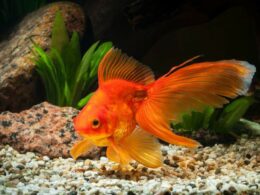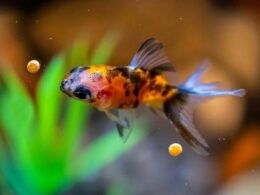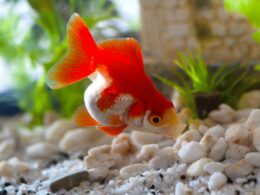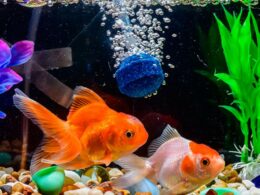In this article Show
Setting up a home aquarium is an exciting venture, but one critical question often lingers in the minds of fish enthusiasts: Can goldfish and angelfish live together peacefully in the same tank?
In this comprehensive guide, we’ll address this common query, debunk misconceptions, and provide you with practical insights for successfully keeping these two popular fish species under one roof.
Can Goldfish and Angelfish Live Together?
Yes, goldfish and angelfish can live together in the same tank, but success depends on careful consideration of crucial factors. Understanding the compatibility between these two species involves addressing aspects such as water parameters, tank size, and feeding habits. Achieving a harmonious coexistence requires maintaining an appropriate environment and being attentive to signs of aggression or health issues.
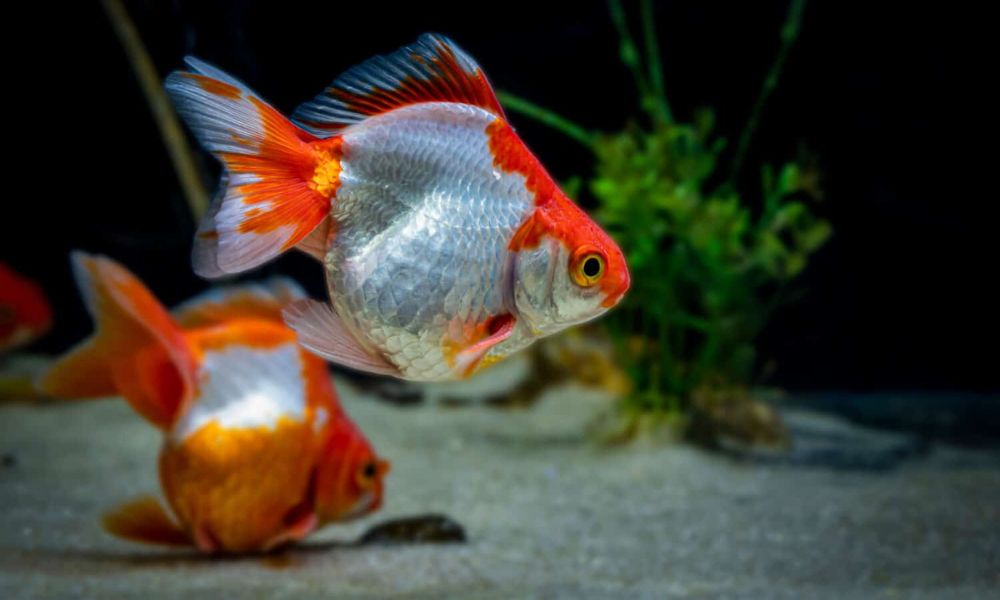
Characteristics of Goldfish and Angelfish
Goldfish Characteristics
1. Size
Goldfish exhibit a diverse range of sizes, with common varieties such as the Comet and Shubunkin growing up to 12 inches or more, while fancy goldfish types like the Oranda and Ryukin generally reach 6 to 8 inches. It’s essential to consider the specific breed when planning tank space.
2. Temperament
Goldfish are known for their social and amiable nature. They thrive in the company of their kind and other compatible fish. While not inherently aggressive, their lively behavior may lead to unintentional fin-nipping during feeding frenzies, requiring careful observation and management.
3. Habitat Preferences
Goldfish are highly adaptable and can thrive in various aquatic environments. They prefer well-oxygenated water with ample swimming space. Additionally, goldfish are known to appreciate a substrate with soft gravel, which aids in their natural foraging behavior.
Angelfish Characteristics
1. Size
Angelfish are renowned for their striking appearance and impressive fins, growing to an average size of 6 inches. While this size may vary slightly depending on the specific angelfish type, aquarists should provide a tank with sufficient vertical space to accommodate their graceful finnage.
2. Temperament
Angelfish are generally peaceful, but territorial tendencies can emerge during breeding periods. Ensuring a well-structured tank with appropriate hiding spots helps mitigate aggression. They often form a hierarchy within the tank, so monitoring their interactions is crucial for a harmonious community.
3. Habitat Preferences
Angelfish thrive in aquariums with tall vegetation or decorations that mimic their native Amazon River habitat. Providing areas for shelter and vertical swimming space is essential. Angelfish prefer slightly warmer water temperatures, making a heater an important addition to the aquarium setup.
Compatibility Factors
1. Water Parameters
- pH Levels: Ensure the aquarium maintains a neutral to slightly alkaline pH level, ranging between 6.5 to 7.5, to accommodate the preferences of both goldfish and angelfish.
- Temperature: Maintain a temperature between 74°F to 78°F (23°C to 26°C) to create a comfortable environment suitable for both species.
- Water Hardness: Aim for moderate water hardness, around 5 to 15 dGH, as goldfish and angelfish thrive in water with these hardness levels.
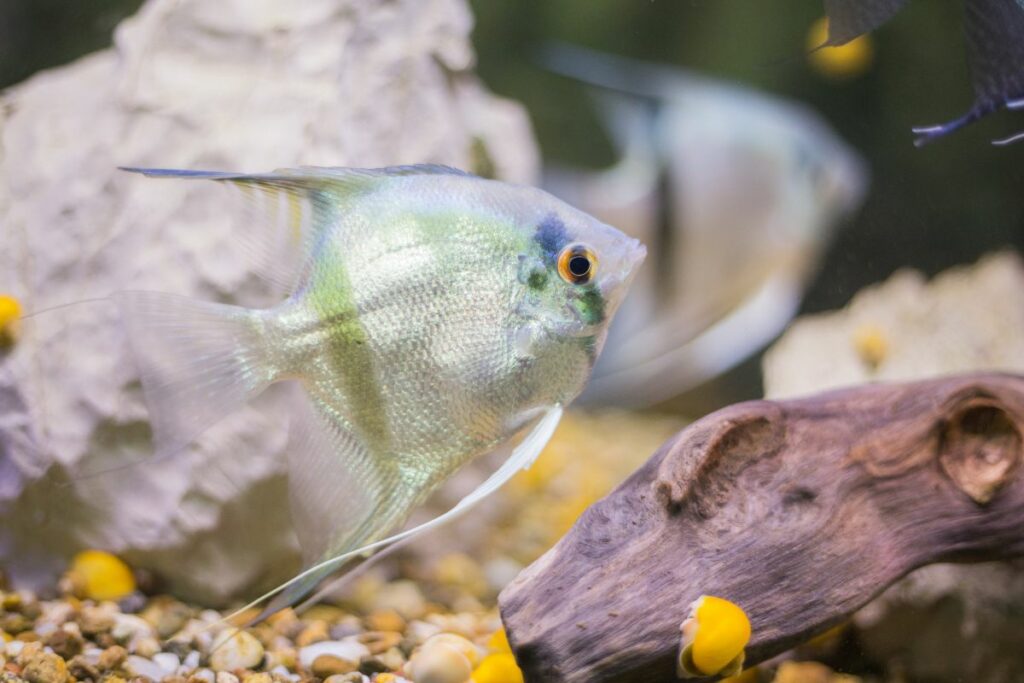
2. Tank Size and Setup
- Minimum Tank Size: Provide a spacious tank, with a minimum size of 30 gallons, to ensure ample swimming space and reduce territorial conflicts.
- Ideal Tank Decorations: Incorporate tall plants and decorations, offering hiding spots for angelfish and a suitable environment for goldfish to explore. Ensure decorations are securely anchored to prevent accidental toppling
- Filtration Requirements: Implement a reliable filtration system to maintain water quality, as both goldfish and angelfish produce waste that can impact water conditions.
3. Feeding Habits
- Differences in Diet: Acknowledge the varying dietary needs; goldfish thrive on a balanced pellet or flake diet supplemented with vegetables, while angelfish benefit from a mix of high-quality pellets, flakes, and frozen or live foods.
- Feeding Schedules: Establish a consistent feeding schedule, ensuring both species receive adequate nutrition without overfeeding.
- Compatibility in Sharing Food: Monitor feeding sessions to prevent one species from dominating and ensure all fish have access to their required nutrients.
Potential Challenges With Goldfish and Angelfish Cohabiting
1. Territorial Issues
Watch for signs of territorial disputes, particularly during breeding periods. Provide ample hiding spots and visual barriers to reduce conflicts between goldfish and angelfish.
2. Signs of Aggression
Keep an eye out for aggressive behaviors, such as chasing or fin-nipping. If observed, consider reorganizing tank decorations to establish new territories and alleviate tension.
Create a well-structured tank layout with hiding spots to prevent territorial disputes. If aggression persists, separate the fish temporarily, then reintroduce them with changes to the tank environment.
Health Concerns
1. Disease Susceptibility
Be aware of disease susceptibility in both goldfish and angelfish. Implement preventive measures such as regular water changes and quarantine of new additions before introducing them to the main tank.
2. Quarantine Protocols
Quarantine new fish for at least two weeks in a separate tank before integrating them with the existing community. This helps identify and address any potential health issues without affecting the entire aquarium.
3. Veterinary Care
Seek professional veterinary care if you notice any signs of illness, unusual behavior, or physical abnormalities in either goldfish or angelfish. Early intervention can prevent the spread of diseases and ensure the overall health of your aquarium community.






